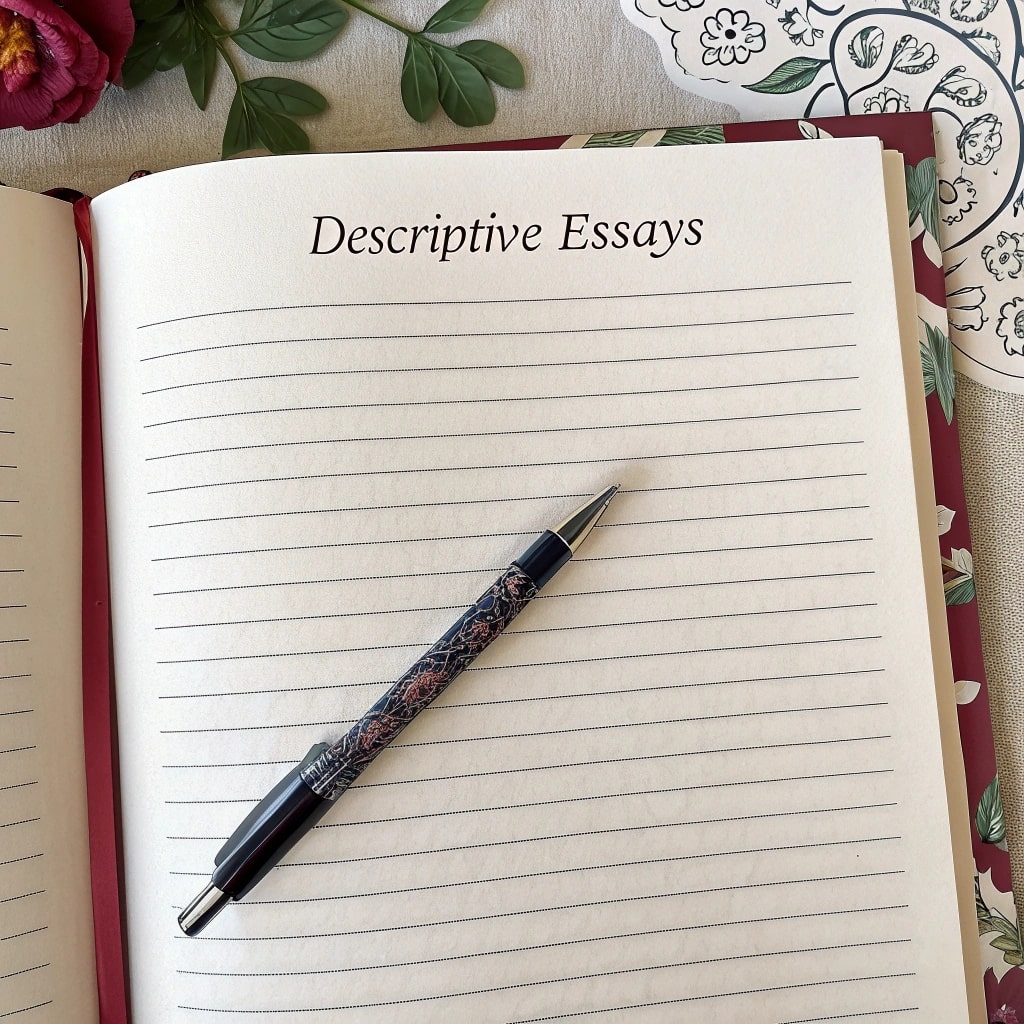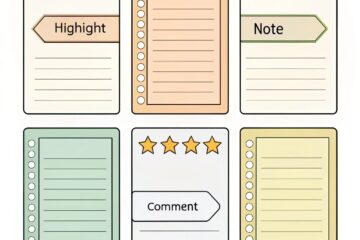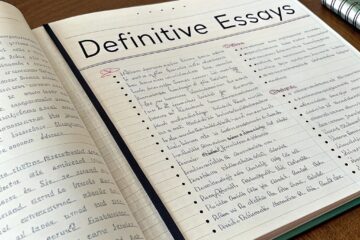How to Write a Descriptive Essay: A Complete Guide for Vivid, Engaging Papers

Introduction: The Power of Descriptive Writing
Learning how to write a descriptive essay opens a world of creative expression in academic writing. Unlike other essay types that focus primarily on facts or arguments, descriptive essays paint pictures with words, inviting readers to experience subjects through vivid sensory details. Whether you’re describing a person, place, object, or experience, mastering descriptive writing helps you create compelling content that resonates with readers long after they’ve finished reading.
In this comprehensive guide, we’ll explore how to write a descriptive essay that engages all five senses and brings your subject to life. From selecting the perfect topic to polishing your final draft, you’ll discover techniques that transform ordinary descriptions into extraordinary reading experiences. Let’s dive into the art and craft of descriptive writing.
What Is a Descriptive Essay?
A descriptive essay is a type of creative writing that provides a detailed account of a person, place, object, event, or experience. Rather than simply stating facts or telling a story, a descriptive essay uses rich language to engage the reader’s imagination and create a vivid mental picture of the subject.
The primary goal of descriptive writing is to make readers feel as though they’re experiencing the subject firsthand. This means going beyond simple visual descriptions to include how something sounds, smells, tastes, and feels—both physically and emotionally.
Key characteristics of descriptive essays include:
- Sensory details that appeal to sight, sound, smell, taste, and touch
- Figurative language like metaphors, similes, and personification
- Precise vocabulary that captures specific qualities
- Emotional elements that convey feelings associated with the subject
- Organized structure that guides readers through the description logically
Understanding how to write a descriptive essay requires recognizing that your goal isn’t just to inform readers about your subject but to help them experience it through your words. The most effective descriptive essays create such powerful impressions that readers feel transported to another time or place.
How Descriptive Essays Differ from Other Essay Types
When learning how to write a descriptive essay, it’s helpful to understand how this format differs from other common essay types:
| Essay Type | Primary Purpose | Focus | Example Topic |
|---|---|---|---|
| Descriptive | To create a vivid impression | Sensory details and imagery | “The Ancient Olive Grove at Sunset” |
| Narrative | To tell a story | Sequence of events | “How I Overcame My Fear of Public Speaking” |
| Expository | To explain or inform | Facts and analysis | “The Process of Photosynthesis” |
| Argumentative | To persuade | Evidence and reasoning | “Why Cities Should Invest in Public Transportation” |
Unlike expository or argumentative essays that prioritize objectivity, descriptive essays often include subjective elements—your personal impressions, emotions, and interpretations. However, they differ from purely personal essays by maintaining a clear focus on the subject being described rather than on your opinions or experiences.
Step-by-Step Guide: How to Write a Descriptive Essay
Step 1: Choose an Engaging Topic
Selecting the right subject is the first crucial step in learning how to write a descriptive essay. The best descriptive essay topics are:
- Specific rather than general: “My grandmother’s hands” instead of “My grandmother”
- Rich in sensory potential: Subjects with distinctive sights, sounds, textures, smells, or tastes
- Emotionally resonant: Topics that evoke genuine feelings
- Familiar enough to describe in detail: Subjects you’ve observed closely
Consider these categories when brainstorming descriptive essay topics:
People:
- A family member who influenced your life
- A stranger whose appearance struck you
- A mentor who changed your perspective
Places:
- A childhood hideaway
- A bustling market or quiet library
- A natural setting in different seasons or weather conditions
Objects:
- A family heirloom with history
- An everyday item with special significance
- Something handmade or artistic
Moments/Experiences:
- A powerful emotional experience
- A first-time achievement
- A cultural celebration or tradition
Once you’ve selected your topic, spend time recalling or observing specific details. Make notes about all sensory aspects and any emotions or memories connected to the subject.
Step 2: Create a Strong Thesis Statement
Though descriptive essays focus on description rather than argument, they still need a clear thesis statement to guide both writer and reader. For a descriptive essay, your thesis should:
- Identify the subject you’re describing
- Suggest the dominant impression or feeling you want to convey
- Hint at the organizing principle for your description
Examples of effective descriptive thesis statements:
- “My grandfather’s workshop, with its symphony of tools and scents of wood, represents a vanishing world of craftsmanship and patience.”
- “The abandoned amusement park stands as a haunting reminder of joy transformed by time into something both beautiful and melancholy.”
- “The first snowfall of winter transforms our ordinary neighborhood into a hushed, magical landscape that awakens childhood wonder.”
Your thesis doesn’t need to explicitly state “This essay will describe…” Instead, it should capture the essence of what makes your subject worth describing.
Step 3: Organize Your Impressions
Before drafting your essay, organize your observations and impressions. Descriptive essays typically follow one of these organizational patterns:
Spatial organization: Describing the subject from top to bottom, left to right, inside to outside, etc.
- Useful for places, objects, or people’s physical appearance
- Creates a mental map for readers to follow
Chronological organization: Following a timeline or sequence
- Effective for events, experiences, or changing conditions
- Helps readers experience the subject as it unfolds
Climactic organization: Building from least to most important details
- Powerful for creating emotional impact
- Saves the most striking elements for last
Categorical organization: Grouping details by sense (sight, sound, smell, etc.)
- Ensures comprehensive sensory coverage
- Helps readers experience the subject fully
Creating an outline based on your chosen organization method will help you maintain focus and ensure you include all important details.
Step 4: Create a Captivating Introduction
Your introduction sets the stage for the descriptive journey ahead. An effective introduction should:
- Hook readers’ attention with an intriguing statement, question, or brief anecdote related to your subject
- Provide context about what you’re describing and why it’s significant
- Present your thesis statement to establish the dominant impression
Example introduction:
“The key turns with a familiar resistance, and as the heavy oak door swings open, time seems to fold back on itself. My grandparents’ farmhouse kitchen—unchanged for forty years—welcomes me with the same symphony of sensations that defined my childhood summers: the sweet-sour tang of sourdough starter, the gentle ticking of the ancient wall clock, and the golden light filtering through gingham curtains. This humble room, with its worn linoleum and weathered wooden table, remains a sanctuary where generations have gathered to nourish both body and family bonds.”
Notice how this introduction immediately engages multiple senses while establishing the emotional significance of the space.
Step 5: Develop Rich Body Paragraphs
When learning how to write a descriptive essay, developing detailed body paragraphs is where your skills truly shine. Each paragraph should focus on a specific aspect of your subject according to your organizational strategy. For each paragraph:
- Begin with a clear topic sentence that introduces the aspect you’re describing
- Include precise, vivid details that appeal to multiple senses
- Use figurative language to create comparisons that deepen understanding
- Incorporate specific, concrete words rather than vague terms
- Vary sentence structure and length to create rhythm and emphasis
- Connect descriptive details to emotions or meanings when appropriate
Example body paragraph:
“The heart of my grandfather’s workshop is his century-old workbench, its maple surface bearing the honorable scars of countless projects. Deep grooves and shallow scratches map fifty years of careful measurements, while random constellations of stains record experiments with stains and varnishes. Running my fingers across its surface feels like reading braille—each dent and depression tells a story of precision or miscalculation. The sweet, complex aroma of linseed oil mingles with the sharper scents of pine and cedar dust that never fully dissipate, creating the workshop’s signature perfume. Against the far edge, tools stand in perfect readiness, their wooden handles burnished to a honeyed glow by decades of my grandfather’s calloused hands.”
Notice how this paragraph engages multiple senses (sight, touch, smell) while using specific nouns (“maple surface,” “linseed oil”) and powerful verbs (“bearing,” “mingles”) to create a vivid impression.
Step 6: Use Language Effectively
Mastering how to write a descriptive essay means developing your language skills to create vivid impressions. Consider these techniques:
Precise Vocabulary
Choose specific words over general ones:
- Instead of “walked,” use “shuffled,” “strode,” or “stumbled”
- Instead of “pretty,” use “elegant,” “charming,” or “striking”
- Instead of “bad smell,” use “pungent,” “acrid,” or “musty”
Having a thesaurus handy can help you find the perfect word, but always ensure you understand the exact meaning and connotations of any word you choose.
Figurative Language
Incorporate these devices to create powerful comparisons:
Similes (using “like” or “as” to compare):
- “The waterfall roared like a thousand drums.”
- “Her voice was as gentle as a summer breeze.”
Metaphors (implying something is something else):
- “The classroom was a prison of boredom.”
- “His eyes were deep pools of wisdom.”
Personification (giving human qualities to non-human things):
- “The wind whispered secrets to the trees.”
- “The camera faithfully captured memories.”
Hyperbole (deliberate exaggeration):
- “The book weighed a ton in my tired arms.”
- “I’ve told you a million times.”
Sensory Details
Engage all five senses in your descriptions:
Visual details: colors, shapes, sizes, light, movement
- “Crimson leaves swirled in tiny tornados across the cobblestone street.”
Auditory details: sounds, volume, rhythm, silence
- “The grandfather clock’s tick-tock punctuated the otherwise perfect silence.”
Tactile details: textures, temperature, pressure
- “The rough, sun-warmed granite held the day’s heat against my palms.”
Olfactory details: smells, scents, aromas
- “The complex fragrance of yeast, butter, and cinnamon signaled Saturday morning.”
Gustatory details: flavors, tastes
- “The strawberry burst with a perfect balance of sweetness and acidity.”
Step 7: Craft a Meaningful Conclusion
Your conclusion should leave readers with a lasting impression of your subject. An effective conclusion:
- Echoes your thesis in fresh language
- Synthesizes the main sensory impressions you’ve created
- Reveals the deeper significance of what you’ve described
- Leaves readers with a final memorable image or thought
Avoid simply summarizing what you’ve already written. Instead, help readers understand why this description matters—what deeper truth or understanding it reveals.
Example conclusion:
“As twilight deepens the shadows in my grandfather’s workshop, the space transforms yet again. Tools that seemed merely functional in daylight now take on an almost sacred quality, guardians of a craft increasingly rare in our digital age. I run my hand one last time along the workbench’s edge, feeling the physical record of patience, precision, and problem-solving pressed into its grain. This room has taught me that creating something with your hands offers wisdom no screen can provide—a lesson preserved in wood shavings and the lingering scent of possibility. Though my grandfather is gone, in this workshop, his essence remains—a testament to the tangible legacy one life can create.”
Step 8: Revise for Maximum Impact
After completing your first draft, set it aside for at least a day before beginning the revision process. When you return to your essay, review it with these questions in mind:
For Content:
- Have I created a dominant impression or feeling about my subject?
- Do I engage all five senses where appropriate?
- Are my details specific and concrete rather than vague?
- Have I used figurative language effectively without overloading the essay?
- Does each paragraph contribute to the overall impression?
- Is my organization logical and easy to follow?
Language:
- Have I used precise, vivid verbs and nouns?
- Are there any clichés or overused expressions I should replace?
- Is my word choice varied and interesting?
- Have I varied my sentence structure and length?
- Does my writing flow smoothly with effective transitions?
For Technical Elements:
- Is my grammar correct?
- Have I checked spelling, especially of unusual or technical terms?
- Are paragraphs an appropriate length for readability?
- Is my formatting consistent?
Consider having someone else read your essay and describe the impression they get from it. If their impression matches what you intended to convey, you’ve succeeded!
Common Mistakes When Writing a Descriptive Essay
As you learn how to write a descriptive essay, watch out for these common pitfalls:
1. Telling Instead of Showing
The cardinal rule of descriptive writing is “show, don’t tell.” Compare:
Telling: “The beach was beautiful and relaxing.” Showing: “Gentle waves lapped at my feet, leaving tiny bubbles that sparkled like diamonds in the golden afternoon sun. The rhythmic shushing of water against sand gradually unwound the tension in my shoulders.”
The first example states a conclusion; the second creates an experience.
2. Overloading with Adjectives
Inexperienced writers often stuff their descriptions with adjectives:
Overloaded: “The big, old, gnarled, twisted, massive tree stood in the lush, green, vibrant, well-maintained garden.” Effective: “The oak, its ancient trunk twisted like a frozen giant, dominated the garden’s emerald expanse.”
Strong nouns and verbs often create more powerful images than strings of adjectives.
3. Lack of Organization
Random observations without logical organization confuse readers. Decide on a pattern (spatial, chronological, etc.) and stick to it so readers can follow your description easily.
4. Vague, General Language
Specific details create stronger impressions than general statements:
Vague: “There were lots of flowers in different colors.” Specific: “Crimson poppies and buttery daffodils nodded among stalks of lavender, creating nature’s perfect color wheel.”
5. Ignoring Sensory Variety
Many descriptive essays rely too heavily on visual details while neglecting other senses. Remember to include sounds, smells, textures, and tastes when relevant.
6. Missing Emotional Connection
Pure physical description without emotional resonance often falls flat. Connect sensory details to feelings, memories, or significance to deepen your description.
Tips for Writing an Outstanding Descriptive Essay
Take your descriptive writing from good to exceptional with these expert tips:
Use Active Voice
Active voice creates more immediate, vivid descriptions:
Passive: “The field was covered by a blanket of snow.” Active: “A blanket of snow covered the field.”
Active constructions generally feel more dynamic and present.
Create Unique Comparisons
Avoid clichéd similes and metaphors. Instead of “cold as ice” or “busy as a bee,” create fresh comparisons:
“The water was cold as a first date’s awkward silence.” “She was busy as a squirrel before winter’s first frost.”
Original comparisons surprise readers and create stronger impressions.
Appeal to Universal and Specific Experiences
Balance universally relatable sensations with specific, distinctive details:
“The coffee’s warmth spread through my fingers—a familiar comfort—but its distinctive notes of blackberry and dark chocolate marked this as no ordinary brew.”
This technique helps readers connect while still experiencing something new.
Use Strategic Repetition
Occasionally repeating key words or phrases can create rhythm and emphasis:
“The silence—the deep, velvet silence of fresh snowfall—wrapped around the house. This silence wasn’t emptiness but a presence, a silence that invited contemplation.”
Write with Motion in Mind
Even when describing static objects, incorporate elements of movement:
“The ancient oak’s branches reached toward the sky, while its roots plunged deep into the soil, creating a living bridge between earth and air.”
Verbs like “reached” and “plunged” give energy to a stationary subject.
Engage Readers Directly When Appropriate
Occasionally addressing readers directly can pull them deeper into your description:
“Stand at the cliff’s edge, and you’ll feel it—that gravitational tug, that vertiginous whispering that simultaneously warns you back and invites you forward.”
Need Help With Your Descriptive Essay?
Learning how to write a descriptive essay takes practice and patience. If you’re struggling to bring your subject to life on the page, our writing services offer expert assistance tailored to your specific needs. Our experienced writers can help you craft vivid, engaging descriptive essays that earn top grades while improving your own descriptive writing skills.
For students working on more structured assignments, we also offer specialized help with expository essays, report writing, and comprehensive project writing services.
Looking for assistance with scholarship applications? Our scholarship essay writing service helps you create compelling personal statements that highlight your unique qualities and experiences.
Descriptive Essay Examples: Topics and Approaches
To illustrate how to write a descriptive essay effectively, here are brief excerpts showing different approaches to descriptive writing:
Example 1: Describing a Place — “The Old Bookstore”
“Books didn’t just fill the shelves at Baxter’s Used Books—they defined the architecture itself. Stacks created narrow corridors and secret reading nooks throughout the Victorian townhouse, while the scent of paper—ranging from yesterday’s bestsellers to leather-bound classics with their vanilla-and-dust perfume—created an olfactory timeline of literary history. Floorboards announced each visitor with distinctive creaks, as though the building itself kept a record of every reader who entered. In the far corner, light streamed through stained glass windows, casting kaleidoscope patterns across the poetry section and transforming ordinary browsing into something almost sacred.”
This example uses rich sensory details (visual, olfactory, auditory) while personifying the bookstore to create a sense of character.
Example 2: Describing a Person — “My Grandfather’s Hands”
“My grandfather’s hands told his life story more honestly than words ever could. Thick-knuckled and rope-veined, they bore the calluses of sixty years of construction work—each hardened patch a medal of honor rather than an imperfection. The permanent half-moon of motor oil beneath his nails remained despite his ritualistic scrubbing with orange pumice soap, while a thirty-year-old scar ran across his left palm like a secondary lifeline—the result of a circular saw that ‘got ornery,’ as he described it with characteristic understatement. When he cradled my infant daughter, those massive hands transformed, becoming gentle as butterfly wings, their strength completely restrained but still tangibly present.”
This example focuses on a specific feature to reveal character while contrasting roughness and gentleness.
Example 3: Describing an Emotion — “First-Day Anxiety”
“Anxiety doesn’t arrive all at once but accumulates like static electricity. It began as a flutter beneath my ribs while ironing my interview outfit, then crystallized into a persistent hum during my morning commute. By the time I entered the office building, it had transformed into a solid mass lodged somewhere between my stomach and throat—a cold, dense weight that made swallowing difficult. The sensation ricocheted through my nervous system: fingertips tingling, jaw clenching rhythmically, right foot tapping a rapid morse code of distress against the polished lobby floor. The rational part of my brain observed these symptoms with detached interest while another part convinced itself that everyone in the crowded elevator could hear my heart’s percussion solo.”
This example describes an abstract emotion through concrete physical sensations.
Conclusion: The Art of Descriptive Writing
Mastering how to write a descriptive essay opens a world of expressive possibility. By learning to translate sensory impressions into vivid language, you develop communication skills that extend far beyond academic assignments. The ability to craft powerful descriptions enhances all forms of writing, from creative stories to professional reports.
The most effective descriptive essays do more than just paint pictures—they create experiences and evoke emotions. They help readers see familiar subjects in new ways or transport them to places they’ve never been. Whether you’re describing a cherished memory, an important person, or an ordinary object transformed by your perspective, descriptive writing allows you to share your unique way of perceiving the world.
As you practice these techniques, you’ll discover that careful observation is the foundation of powerful description. Take time to notice details others might miss. Listen for subtle sounds. Identify complex scents. Feel textures mindfully. The more attentive you become to sensory information in your daily life, the more raw material you’ll have for your descriptive essays.
Remember that learning how to write a descriptive essay is a progressive skill. Each attempt helps you refine your ability to capture experience in words. With practice, you’ll develop a distinctive descriptive voice that brings your subjects vividly to life for your readers.
If you’re looking for help with other types of academic writing, explore our resources on professional capstone project help or get assistance with custom essays tailored to your specific requirements.
For insights on incorporating current research into academic papers, check out our article on integrating climate change findings into research papers.
Happy writing!



0 Comments